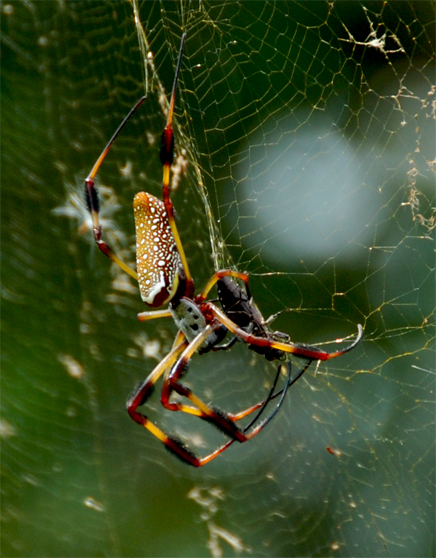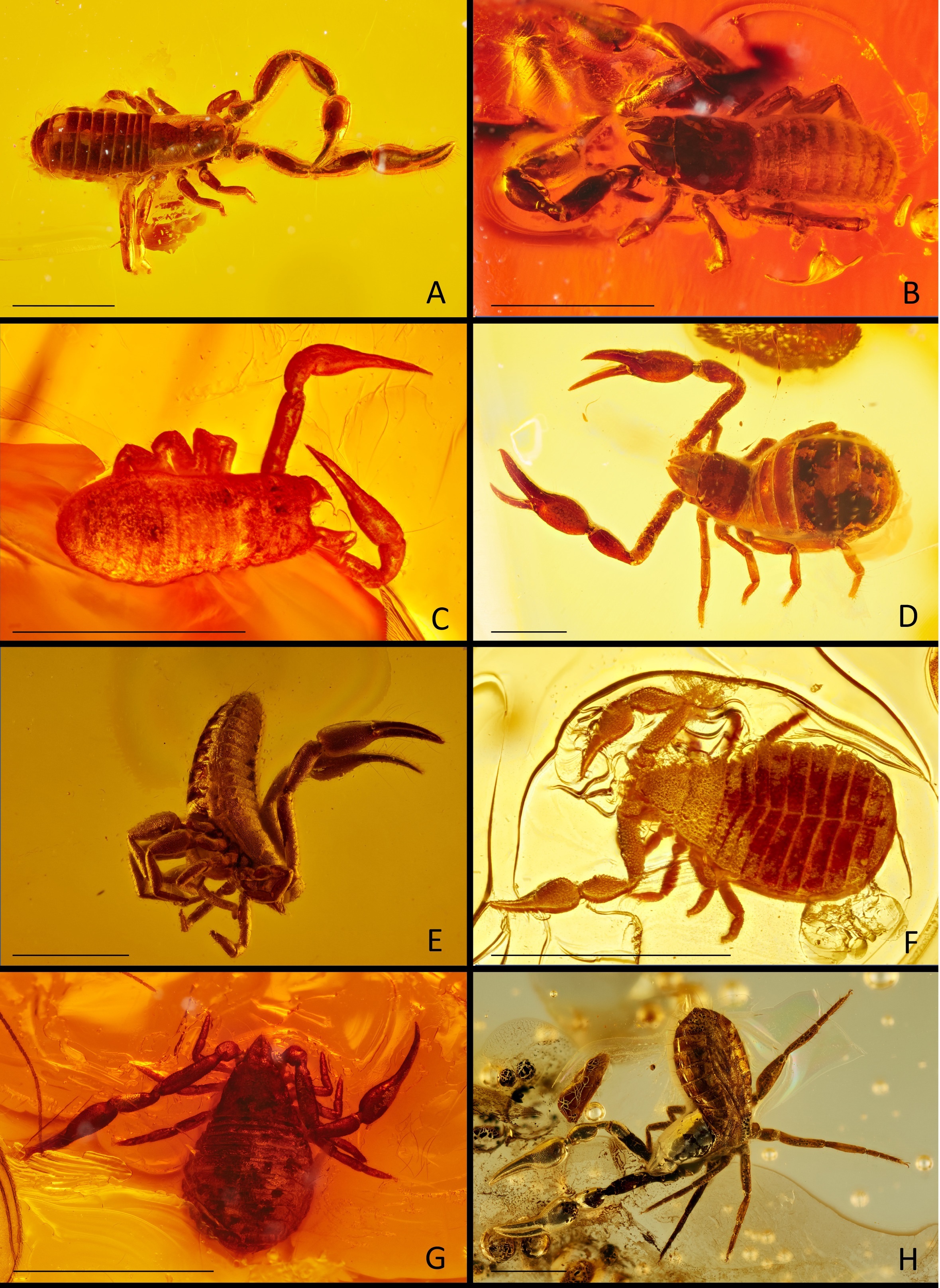|
Austinochernes
''Austinochernes'' is a genus of pseudoscorpions in the Chernetidae family. It is endemic to Australia, and was described in 2021 by Australian arachnologist Mark Harvey. The genus name honours Professor Andy Austin for his contributions to systematics, combined with the genus name ''Chernes'' (Greek Greek may refer to: Anything of, from, or related to Greece, a country in Southern Europe: *Greeks, an ethnic group *Greek language, a branch of the Indo-European language family **Proto-Greek language, the assumed last common ancestor of all kno ...: 'labourer'). Species The genus contains the following two species: * '' Austinochernes andrewaustini'' Harvey, 2021 * '' Austinochernes zigzag'' Harvey, 2021 References Chernetidae Pseudoscorpion genera Taxa described in 2021 Taxa named by Mark Harvey {{pseudoscorpion-stub ... [...More Info...] [...Related Items...] OR: [Wikipedia] [Google] [Baidu] |
Austinochernes Zigzag
''Austinochernes zigzag'' is a species of pseudoscorpion in the Chernetidae family. It is endemic to Australia. It was described in 2021 by Australian arachnologist Mark Harvey. The specific epithet ''zigzag'' refers to the type locality. Description The body length of males is 2.40–2.80 mm. The colour of the pedipalps, coxae and carapace is deep red-brown, the legs yellow-brown. Distribution and habitat The species occurs in northern Tasmania. The type locality is the Zigzag Track at Cataract Gorge, Launceston, where the male holotype and paratypes were collected from beneath a rock. Behaviour The pseudoscorpions are terrestrial predators Predation is a biological interaction in which one organism, the predator, kills and eats another organism, its prey. It is one of a family of common feeding behaviours that includes parasitism and micropredation (which usually do not kill .... References Chernetidae Endemic fauna of Australia Pseudoscorpion ... [...More Info...] [...Related Items...] OR: [Wikipedia] [Google] [Baidu] |
Austinochernes Andrewaustini
''Austinochernes andrewaustini'' is a species of pseudoscorpion in the Chernetidae family. It is endemic to Australia. It was described in 2021 by Australian arachnologist Mark Harvey. The specific epithet ''andrewaustini'' honours Professor Andy Austin. Description The body length of the male holotype is 2.87 mm; that of female paratypes 2.66–2.82 mm. The colour of the pedipalps, coxae and carapace is deep red-brown, the legs yellow-brown. Distribution and habitat The species occurs in south-eastern Australia. The type locality is the summit of Mount Barker in the Mount Lofty Ranges east of Adelaide, where the holotype was collected from beneath a rock, with ants. The species has also been recorded from Sherbrooke Forest in the Dandenong Ranges, 40 km east of Melbourne. Behaviour The pseudoscorpions are terrestrial predators Predation is a biological interaction in which one organism, the predator, kills and eats another organism, its prey. It i ... [...More Info...] [...Related Items...] OR: [Wikipedia] [Google] [Baidu] |
Chernetidae
Chernetidae is a family of pseudoscorpions, first described by Anton Menge in 1855. Genera , the ''World Pseudoscorpiones Catalog'' accepts the following 119 genera: * '' Acanthicochernes'' Beier, 1964 * '' Acuminochernes'' Hoff, 1949 * '' Adelphochernes'' Beier, 1937 * ''Allochernes ''Allochernes'' is a genus of pseudoscorpion Pseudoscorpions, also known as false scorpions or book scorpions, are small, scorpion-like arachnids belonging to the order Pseudoscorpiones, also known as Pseudoscorpionida or Chelonethida. Pseudo ...'' Beier, 1932 * '' Americhernes'' Muchmore, 1976 * '' Anaperochernes'' Beier, 1964 * '' Anthrenochernes'' Lohmander, 1939 * '' Antillochernes'' Muchmore, 1984 * '' Apatochernes'' Beier, 1948 * '' Asterochernes'' Beier, 1955 * '' Atherochernes'' Beier, 1954 * '' Attaleachernes'' Mahnert, 2009 * '' Austinochernes'' Harvey, 2021 * '' Austrochernes'' Beier, 1932 * '' Balgachernes'' Harvey, 2018 * '' Barbaraella'' Harvey, 1995 * '' Bipeltochernes'' Dashda ... [...More Info...] [...Related Items...] OR: [Wikipedia] [Google] [Baidu] |
Mark Harvey (arachnologist)
Mark Stephen Harvey (born 17 September 1958) is a museum scientist and biologist. Since 1989 he has been based at the Western Australian Museum as Curator of Arachnids and Myriapods. Career Harvey graduated from Monash University in 1983 with a PhD titled "Contributions to the systematics of the Pseudoscorpionida (Arachnida) : the genus ''Synsphyronus'' Chamberlin (Garypidae) and the family Sternophoridae". His research interests include the systematics and evolution of arachnids and other terrestrial invertebrates. He has published 374 scientific papers or books, and was instrumental in the promotion of short-range endemism Short-range endemic invertebrates through a paper outlining the criteria for recognising taxa that could be considered short-range endemics. His primary research interests are with Pseudoscorpions. As of 2024, he has described 888 new species, 93 new genera and four new families including the aquatic mite family Pezidae and the pseudoscorpion family Lar ... [...More Info...] [...Related Items...] OR: [Wikipedia] [Google] [Baidu] |
Genus
Genus (; : genera ) is a taxonomic rank above species and below family (taxonomy), family as used in the biological classification of extant taxon, living and fossil organisms as well as Virus classification#ICTV classification, viruses. In binomial nomenclature, the genus name forms the first part of the binomial species name for each species within the genus. :E.g. ''Panthera leo'' (lion) and ''Panthera onca'' (jaguar) are two species within the genus ''Panthera''. ''Panthera'' is a genus within the family Felidae. The composition of a genus is determined by taxonomy (biology), taxonomists. The standards for genus classification are not strictly codified, so different authorities often produce different classifications for genera. There are some general practices used, however, including the idea that a newly defined genus should fulfill these three criteria to be descriptively useful: # monophyly – all descendants of an ancestral taxon are grouped together (i.e. Phylogeneti ... [...More Info...] [...Related Items...] OR: [Wikipedia] [Google] [Baidu] |
Pseudoscorpions
Pseudoscorpions, also known as false scorpions or book scorpions, are small, scorpion-like arachnids belonging to the order Pseudoscorpiones, also known as Pseudoscorpionida or Chelonethida. Pseudoscorpions are generally beneficial to humans because they prey on clothes moth larvae, carpet beetle larvae, booklice, ants, mites, and small flies. They are common in many environments, but they are rarely noticed due to their small size. When people see pseudoscorpions, especially indoors, they often mistake them for ticks or small spiders. Pseudoscorpions often carry out phoresis, a form of commensalism in which one organism uses another for the purpose of transport. Characteristics Pseudoscorpions belong to the class Arachnida. They are small arachnids with a flat, pear-shaped body, and pincer-like pedipalps that resemble those of scorpions. They usually range from in length.Pennsylvania State University, DepartmentEntomological Notes: Pseudoscorpion Fact Sheet/ref> The large ... [...More Info...] [...Related Items...] OR: [Wikipedia] [Google] [Baidu] |
Family (biology)
Family (, : ) is one of the eight major hierarchical taxonomic ranks in Linnaean taxonomy. It is classified between order and genus. A family may be divided into subfamilies, which are intermediate ranks between the ranks of family and genus. The official family names are Latin in origin; however, popular names are often used: for example, walnut trees and hickory trees belong to the family Juglandaceae, but that family is commonly referred to as the "walnut family". The delineation of what constitutes a family—or whether a described family should be acknowledged—is established and decided upon by active taxonomists. There are not strict regulations for outlining or acknowledging a family, yet in the realm of plants, these classifications often rely on both the vegetative and reproductive characteristics of plant species. Taxonomists frequently hold varying perspectives on these descriptions, leading to a lack of widespread consensus within the scientific community ... [...More Info...] [...Related Items...] OR: [Wikipedia] [Google] [Baidu] |
Endemism
Endemism is the state of a species being found only in a single defined geographic location, such as an island, state, nation, country or other defined zone; organisms that are indigenous to a place are not endemic to it if they are also found elsewhere. For example, the Cape sugarbird is found exclusively in southwestern South Africa and is therefore said to be ''endemic'' to that particular part of the world. An endemic species can also be referred to as an ''endemism'' or, in scientific literature, as an ''endemite''. Similarly, many species found in the Western ghats of India are examples of endemism. Endemism is an important concept in conservation biology for measuring biodiversity in a particular place and evaluating the risk of extinction for species. Endemism is also of interest in evolutionary biology, because it provides clues about how changes in the environment cause species to undergo range shifts (potentially expanding their range into a larger area or b ... [...More Info...] [...Related Items...] OR: [Wikipedia] [Google] [Baidu] |
Arachnology
Arachnology is the science, scientific study of arachnids, which comprise spiders and related invertebrates such as scorpions, Pseudoscorpionida, pseudoscorpions, Opiliones, harvestmen, Tick, ticks, and mites. Those who study spiders and other arachnids are arachnologists. More narrowly, the study of spiders alone (Order (biology), order Araneae) is known as araneology. The word "wiktionary:arachnology, arachnology" derives from the Ancient Greek words , ''arachnē'', "spider"; and , ''-logia'', "the study of a particular subject". The greek word for "spider" itself refers to Arachne, the female protagonist of an ancient tale of the Greek mythology, Greek Mythology. Arachnology as a science Arachnologists are primarily responsible for biological classification, classifying arachnids and studying aspects of their biology. In the popular imagination, they are sometimes referred to as spider experts. Disciplines within arachnology include naming species and determining their phylog ... [...More Info...] [...Related Items...] OR: [Wikipedia] [Google] [Baidu] |
Systematics
Systematics is the study of the diversification of living forms, both past and present, and the relationships among living things through time. Relationships are visualized as evolutionary trees (synonyms: phylogenetic trees, phylogenies). Phylogenies have two components: branching order (showing group relationships, graphically represented in cladograms) and branch length (showing amount of evolution). Phylogenetic trees of species and higher taxa are used to study the evolution of traits (e.g., anatomical or molecular characteristics) and the distribution of organisms ( biogeography). Systematics, in other words, is used to understand the evolutionary history of life on Earth. The word systematics is derived from the Latin word of Ancient Greek origin '' systema,'' which means systematic arrangement of organisms. Carl Linnaeus used 'Systema Naturae' as the title of his book. Branches and applications In the study of biological systematics, researchers use the different br ... [...More Info...] [...Related Items...] OR: [Wikipedia] [Google] [Baidu] |
Greek Language
Greek (, ; , ) is an Indo-European languages, Indo-European language, constituting an independent Hellenic languages, Hellenic branch within the Indo-European language family. It is native to Greece, Cyprus, Italy (in Calabria and Salento), southern Albania, and other regions of the Balkans, Caucasus, the Black Sea coast, Asia Minor, and the Eastern Mediterranean. It has the list of languages by first written accounts, longest documented history of any Indo-European language, spanning at least 3,400 years of written records. Its writing system is the Greek alphabet, which has been used for approximately 2,800 years; previously, Greek was recorded in writing systems such as Linear B and the Cypriot syllabary. The Greek language holds a very important place in the history of the Western world. Beginning with the epics of Homer, ancient Greek literature includes many works of lasting importance in the European canon. Greek is also the language in which many of the foundational texts ... [...More Info...] [...Related Items...] OR: [Wikipedia] [Google] [Baidu] |
Pseudoscorpion Genera
Pseudoscorpions, also known as false scorpions or book scorpions, are small, scorpion-like arachnids belonging to the order Pseudoscorpiones, also known as Pseudoscorpionida or Chelonethida. Pseudoscorpions are generally beneficial to humans because they prey on clothes moth larvae, carpet beetle larvae, booklice, ants, mites, and small flies. They are common in many environments, but they are rarely noticed due to their small size. When people see pseudoscorpions, especially indoors, they often mistake them for ticks or small spiders. Pseudoscorpions often carry out phoresis, a form of commensalism in which one organism uses another for the purpose of transport. Characteristics Pseudoscorpions belong to the class Arachnida. They are small arachnids with a flat, pear-shaped body, and pincer-like pedipalps that resemble those of scorpions. They usually range from in length.Pennsylvania State University, DepartmentEntomological Notes: Pseudoscorpion Fact Sheet/ref> The large ... [...More Info...] [...Related Items...] OR: [Wikipedia] [Google] [Baidu] |





